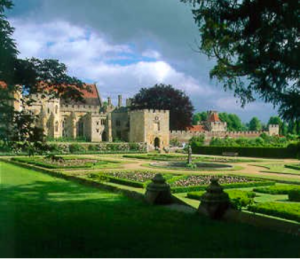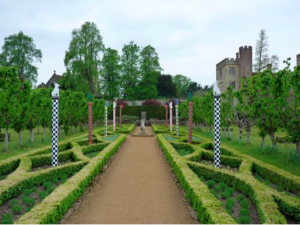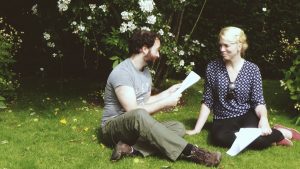Sonnets on Site at Penshurst
In a long tradition of romantic poetry, how can one write a sonnet that says ‘I love you’ in a natural and original way? The sonnets of Sir Philip Sidney (1554-86), published in 1591 in a sequence entitled Astrophil and Stella, address this question. The paradox of being natural and highly artificial at the same time is mirrored in the formal gardens of Sidney’s family home, Penshurst Place. They are highly-patterned, artistic re-shapings of nature, both public and private spaces.

Like the gardens, Sidney’s sonnets are a public display of artistic skill and, at the same time, expressions of ‘loving in truth’, supposedly showing the natural, private passions of the heart. We can see the paradox of public and private, natural and artificial, in Sidney’s opening sonnet:
Loving in truth, and fain in verse my love to show
That she, dear she, might take some pleasure of my pain
Pleasure might cause her read, and reading might make her know
Knowledge might pity win, and pity grace obtain,
I sought fit words to paint the blackest face of woe,
Studying inventions fine, her wits to entertain;
Oft turning others’ leaves, to see if thence would flow
Some fresh and fruitful showers upon my sun-burned brain.
But words came halting forth, wanting Invention’s stay,
Invention, Nature’s child, fled stepdame Study’s blows,
And others’ feet still seemed but strangers in my way.
Thus great with child to speak, and helpless in my throes,
Biting my truant pen, beating myself for spite
‘Fool’ said my Muse to me, ‘look in thy heart and write’
The speaker ‘Astrophil’ (star lover) struggles to express his true feelings to his mistress Stella (the star), but must battle through a tradition of love poetry. His ‘invention’ is thwarted: how can he find an original way of saying ‘I love you’? He is smothered: ‘Oft turning others’ leaves’ (or pages) in his study.
Reading the poem in the context of the formal gardens is informative. Both are imitations of Italian Renaissance models. Sidney’s poems adapt the sonnet form – 14 lines of intricately rhymed verse – invented by Petrarch (1304-74), one of the poets whose ‘leaves’ intimidate Astrophil. The terrace garden (above), which was designed by Sidney’ father and remains to this day, is also an imitation of Italian Renaissance forms. It consists of highly-wrought shapes like the patterns in Sidney’s sonnet (see how pain/pleasure read/reading know/knowledge are intertwined in the first 4 lines). Just as Sidney imitates former sonneteers, the redeveloped gardens at Penshurst imitate the Renaissance in their use of formal lines, heraldry, and tall hedges which create private ‘bowers’ like outdoor rooms (see Gardens and Grounds Interactive Map via Penshurst Place website).

The paradox of artistry and nature, flamboyant display and secret concealment characterizes both the gardens and the sonnet. The poet Sidney’s feelings are concealed under layers of coding and convention, even though Astrophil says he wants to show the truth of his feelings in verse. The very last line of the poem provides an answer: “‘Fool,” said my muse to me, “look in thy heart and write”’. He is to write straight from the heart. The only problem is that the sonnet is ended! His true feelings are beyond the reach of the sonnet, still hidden, just as intimate assignations in the romantic gardens at Penshurst might be concealed in the secret, garden rooms.

You must be logged in to post a comment.